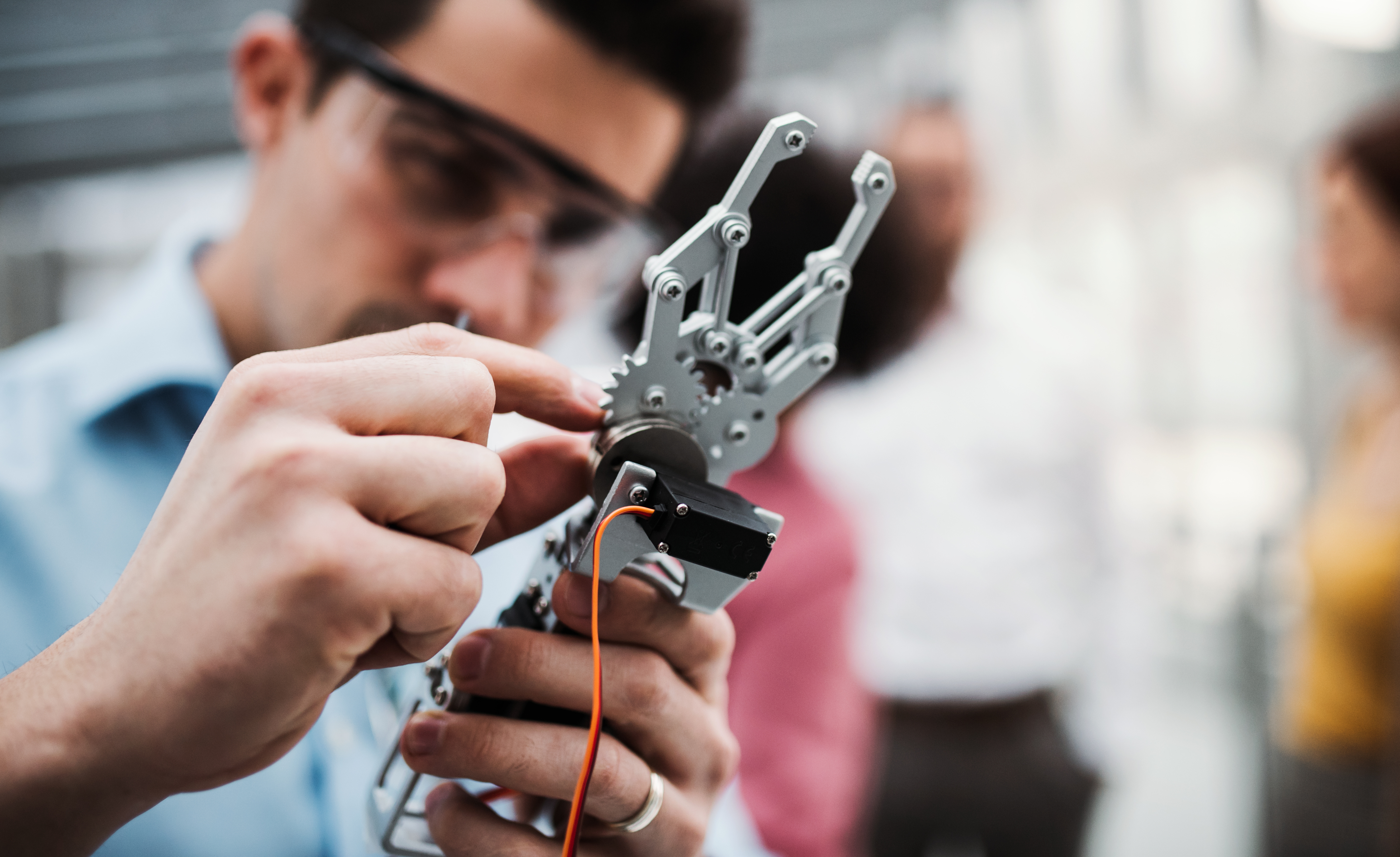Pro Bono Assistance through the Patent Process
Once you’ve met with one of our pro bono attorneys at a Brief Advice Clinic or attended one of our workshops, you might be ready to take the next step in applying for more involved assistance with a patent attorney. Note: Since we rely on pro-bono patent attorneys who volunteer to file patent applications, we have limited resources and cannot guarantee the placement of any particular invention. This is not reflective of the invention itself, but it is a determination of the best use of our limited resources.

Eligibility
To be eligible, applicants must meet the following requirements for the Inventor Assistance Program:
- Inventor’s total household income must be under 400 percent of the federal poverty guidelines (2023 Poverty Guidelines). Household income is a pre-tax measure of the combined incomes of all people sharing a particular household or place of residence. It includes every form of income, e.g., salaries and wages, retirement income, near cash government transfers like food stamps, and investment gains.
- The applicant (or one of the applicants if filing in a group) must currently reside or have a business in Minnesota, North Dakota, South Dakota, Iowa, or Wisconsin.
- Applicant/inventor must show proof of successful completion of the USPTO online certificate training course.
- The invention presented must be viable for patent (not a perpetual motion machine, prayer box etc.). To receive a patent allowance, an invention must be novel, non-obvious, and useful. A patent cannot be obtained upon a mere idea or suggestion. The patent is granted upon the new machine, item of manufacture, etc., as has been said, and not upon the idea or suggestion of the new machine.
How to Apply
Wisconsin based inventors, email wisc.iap@legalcorps.org to receive a link to the online application. Inventors in Iowa, Minnesota, North Dakota and South Dakota email iap@legalCORPS.org to receive a link to the online application form.
A complete description of the actual machine or other subject matter for which a patent is sought is required. After signing a Confidentiality and Non Disclosure Agreement with LegalCORPS, the applicant will disclose their invention details to LegalCORPS. This may be a previously filed provisional patent application; or the applicant/inventor may disclose their invention details on our internal form we refer to as a Record of Invention (RoI). The RoI is a format for the inventor to describe their invention in detail, including all specifications, drawings or photos, and documented research on
Frequently Asked Questions
The right given by the government to an inventor to exclude others from making, using, and/or selling an invention. It is not a right to make the invention. With a patent, an inventor receives a period of exclusive rights in exchange for technological disclosure to the public. This right lasts for 20 years from the filing of the patent application. Enforcement is up to the patent owner (by suing the infringer in court), not the USPTO.
*copy needed*
- Applicant must have an invention, not just an idea. An invention requires one of the following to be true:
- There is a working prototype;
- There are drawings that show how the invention is made and/or put together, such that someone moderately skilled in the art could create the invention;
- There are written instructions describing how the invention is made, such that someone moderately skilled in the art could create the invention.
- Finish the USPTO certification found here (embed link)
- Complete an application form which can be accessed here [the new website is going to have a common application – I don’t know if it is that far yet]
If your application has been approved and you want to receive our assistance with filing a patent application, you will need to provide the details to LegalCORPS. Prior to sending us the details, LegalCORPS has a nondisclosure agreement (NDA) signed by both you and Legal Corps, assuring you we will not disclose the details of your invention.
The Inventor Assistance Program needs the inventor to be available to step in and answer questions regarding invention disclosure, sign-off on provisional/non-provisional filings and alterations, as well as answer additional clarifying questions. The necessity for consistent direct communication makes application to our program on behalf of another inventor very difficult. A valid grant of Power of Attorney will have limited benefit if communication with the inventor is significantly limited.
Whether or not an individual involved in the inventing process is considered a “co-inventor” depends on their level of involvement. Business partners solely associated with financing, marketing, business formation, or anything of the sort with no involvement in the inventing process are not considered “co-inventors.”
If more than one inventor is applying under a single invention, then all inventors listed must qualify by income, only one of the inventors listed must qualify by jurisdiction through one of the residency options.
LegalCORPS requires payment of a $50 placement fee to be paid upon being matched with an attorney for service. This is the only fee that LegalCORPS will collect. The inventor is responsible for all fees paid to the USPTO. This would include an application filing fee, search, and examination fees. Please see the USPTO website for a comprehensive list of fees. The inventor does not pay legal fees for the attorney’s time.
No, we do not ask for nor require any form of royalties accrued from the sale of products patented through our program.
